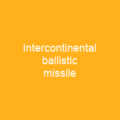Understanding the Terminal High Altitude Area Defense (THAAD)
Imagine a fortress in the sky, ready to intercept any incoming threat. That’s what the Terminal High Altitude Area Defense (THAAD) system is all about. Developed after the harrowing experience of Iraq’s Scud missile attacks during the Gulf War, THAAD stands as a testament to America’s commitment to missile defense.
The Genesis and Development
Back in 1987, the concept for THAAD was first proposed. It wasn’t until 1991 that the US Army formally requested proposals from industry. Lockheed Martin emerged as the prime contractor, taking on the challenge of turning a design into reality.
The Technical Details
THAAD relies on its kinetic energy to destroy incoming missiles, making it a hit-to-kill system. This means no warheads are involved; instead, the THAAD missile collides with the target at high speed, destroying it through sheer force. The system is capable of intercepting short-, medium-, and intermediate-range ballistic missiles in their terminal phase.
Deployment and Success
The first operational deployment took place in May 2008, with THAAD units being deployed to various strategic locations such as the United Arab Emirates, Israel, Romania, and South Korea. In January 2022, THAAD made its first successful interception of a hostile medium-range ballistic missile in the UAE.
Future Enhancements
Lockheed Martin is currently working on an extended-range (ER) version of THAAD to counter evolving threats posed by hypersonic glide vehicles. This new design features a 5-inch-diameter single-stage booster that expands to a 21-inch diameter first stage, with a second kick stage for greater range.
Operational Details
The THAAD system is being designed, built, and integrated by Lockheed Martin Missiles and Fire Control. Key subcontractors include Raytheon, Boeing, Aerojet Rocketdyne, Honeywell, BAE Systems, Oshkosh Defense, and MiltonCAT. Each battery costs around $800 million and consists of six launchers.
Deployment History
In 2017, the Pentagon proposed spending $7.9 billion on missile defense, including THAAD interceptors. The system was deployed in Israel in 2012 to counter Iranian threats, and a battery was authorized for deployment there due to ongoing attacks.
International Deployments
The US Army has contracted for 12 launchers of the Terminal High Altitude Area Defense (THAAD) system. The contract includes support equipment and brings batteries to the standard six-launcher configuration. In 2017, the Pentagon proposed spending $7.9 billion on missile defense, including THAAD interceptors.
Recent Developments
In July 2016, following North Korea’s ballistic missile and nuclear tests, American and South Korean military officials announced the deployment of THAAD in South Korea. Seongju County residents protested due to radiation concerns from AN/TPY-2 radar. The US and South Korea relocated the site to alleviate these concerns.
Future Prospects
The 35th Air Defense Artillery Brigade integrated THAAD into its layered defense on the Korean Peninsula. By April 2017, six trailers carrying THAAD equipment entered the Seongju site. On May 2, 2017, officials announced that the system was operational and could intercept North Korean missiles.
Continued Expansion
The US has 7 THAAD batteries and plans to expand to 8. The Army Space and Missile Defense Command considered THAAD deployments to Europe and the Middle East by March 2016. Japan considered procuring either THAAD or Aegis Ashore for added missile defense, with government officials favoring Aegis Ashore due to its wider coverage area and cost.

As we look towards the future, THAAD continues to evolve and adapt. It remains a critical component in America’s defense strategy, ensuring that any threat can be met with precision and effectiveness.
In conclusion, the Terminal High Altitude Area Defense (THAAD) system is more than just a technological marvel; it’s a symbol of our commitment to security and peace. As threats continue to evolve, so too will THAAD, ensuring that we remain one step ahead in safeguarding our nations.
You want to know more about Terminal High Altitude Area Defense?
This page is based on the article Terminal High Altitude Area Defense published in Wikipedia (retrieved on December 29, 2024) and was automatically summarized using artificial intelligence.






